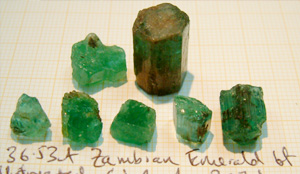 Zambia has great potential to increase Non Traditional Exports (NTEs), whose latest figures for 2013 have so far hit 20 per cent.
Zambia has great potential to increase Non Traditional Exports (NTEs), whose latest figures for 2013 have so far hit 20 per cent.
The Government is still optimistic that there will be a steady increase in foreign exchange earnings through NTEs over the next couple of years.
Of course, these figures are for exports of products such as cement, which raked in a total of US$234 million, gemstones brought in $220 million, tobacco $215 million while, sugar earned not less than $184 million.
In addition to these products, maize has now joined the list of potential goods that will enhance foreign exchange earnings, especially if production is consistent and devoid of natural disasters such as floods and famine.
The country’s anticipated bumper harvest of 3.3 million tonnes realised in the 2013/2014 farming season, is a good platform to increase exports of NTEs.
Data shows that maize production for large scale farmers in 2013 increased by 18 per cent to 5.86 tonnes from the previous 4.82 tonnes per hectare.
In the same light, small scale maize production also appreciated by 21 per cent to 2.26 tonnes per hectare from 1.86 tonnes.
A rise in the country’s maize production will add up to the increasing list of export products for Zambia, whose economy largely depends on copper as the main foreign exchange earner.
An increase in NTEs can help in enhancing Gross Domestic Product (GDP) for the country which is poised to post 6.5 per cent economic growth this year.
With the Government now lifting the ban on maize exports, sending a total of 43,950 tonnes of grain to neighbouring Congo DR, Malawi and Tanzania, the challenge is now on local farmers to increase production.
Apart from that, Zambia is also on the verge of exporting 59,910 tonnes of mealie-meal, 17,310 tonnes of maize bran and 1,260 tonnes of brewer’s grit.
Agriculture Minister Wylbur Simuusa, who announced the lifting of the ban recently, should ensure that the Food Reserve Agency (FRA), mops up all the excess grain lying around in far flung areas to increase export prospects.
Government should on the other hand, curb illegal maize exports to avoid losing colossal sums of money in both taxes and foreign exchange.
International maize prices now hovering between $200 and $260 per tonne, can earn Zambia substantial amounts of revenue if grain exports is well managed.
Success in this regard, can spur the country’s economy, post an improvement in all economic indicators like inflation, foreign exchange earnings as well as, GDP.
Value addition to the maize, could also be an added incentive which can trigger development of small scale economic projects that can create massive employment for the youth.
Copper being a wasting asset, encouraging maize production and exports, is one guarantee that can enhance the country’s NTEs base and also strengthen the local currency against other convertible international currencies.






